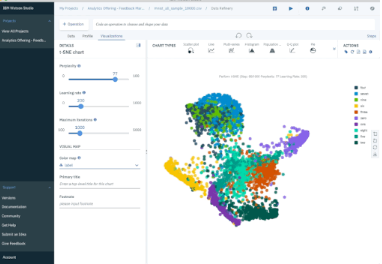Machine learning is a hot topic in research and industry, with new methodologies developed all the time. The speed and complexity of the field makes keeping up with new techniques difficult even for experts — and potentially overwhelming for beginners.
To demystify machine learning and to offer a learning path for those who are new to the core concepts, let’s look at ten different methods, including simple descriptions, visualizations, and examples for each one.

A machine learning algorithm, also called model, is a mathematical expression that represents data in the context of a problem, often a business problem. The aim is to go from data to insight. For example, if an online retailer wants to anticipate sales for the next quarter, they might use a machine learning algorithm that predicts those sales based on past sales and other relevant data. Similarly, a windmill manufacturer might visually monitor important equipment and feed the video data through algorithms trained to identify dangerous cracks.
The ten methods described offer an overview — and a foundation you can build on as you hone your machine learning knowledge and skill:
- Regression
- Classification
- Clustering
- Dimensionality Reduction
- Ensemble Methods
- Neural Nets and Deep Learning
- Transfer Learning
- Reinforcement Learning
- Natural Language Processing
- Word Embeddings
Read the full article, with detailed description for each method, here.
